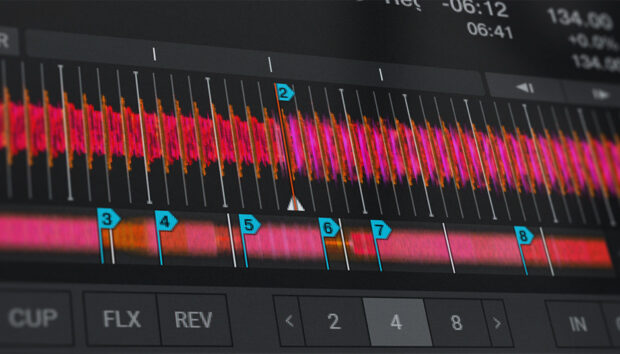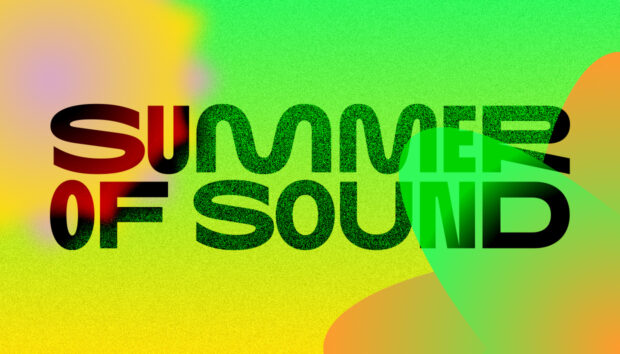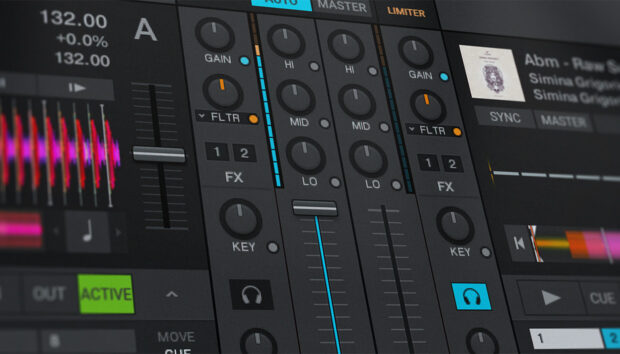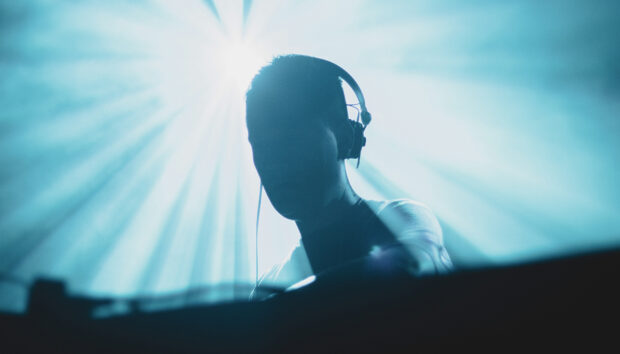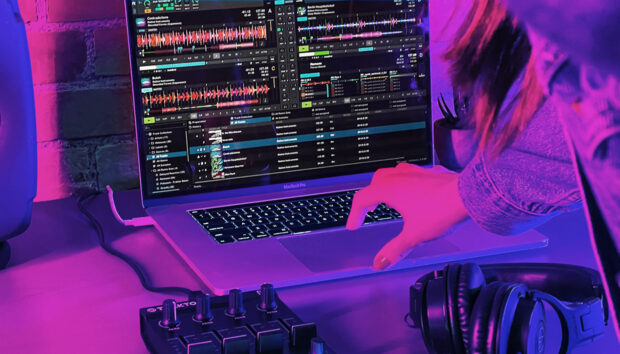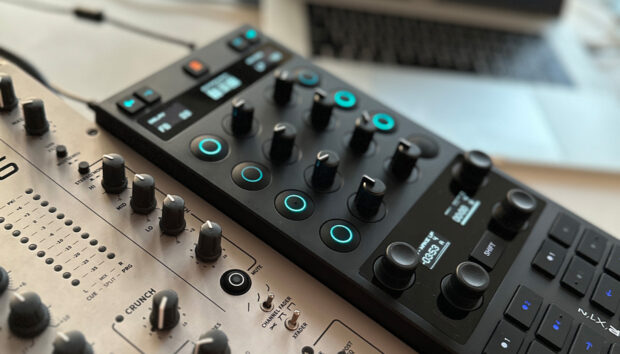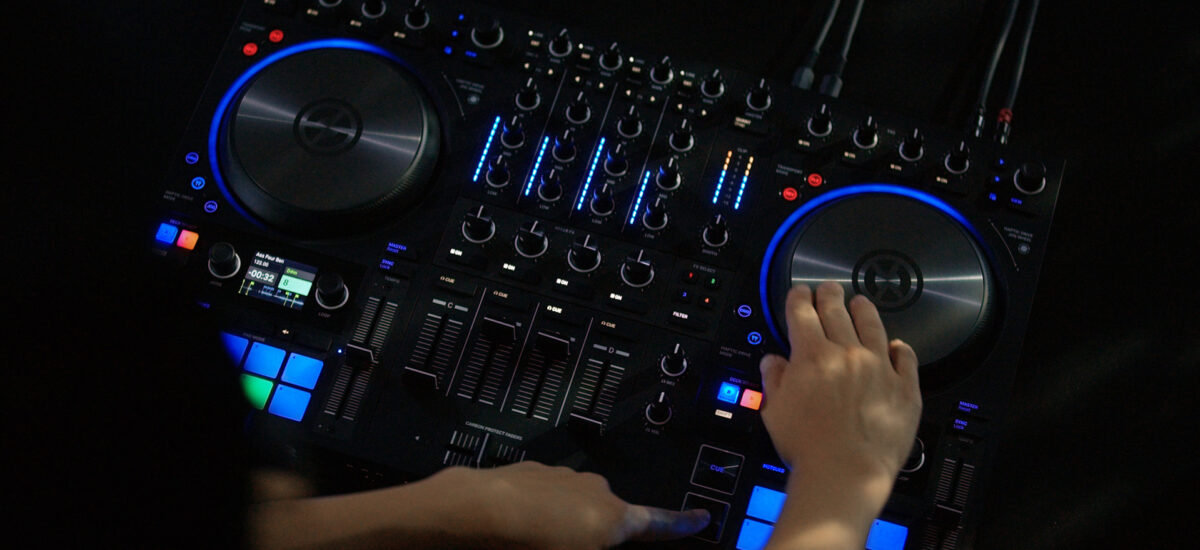
Are you interested in learning to DJ, but don’t know how to get started? Maybe you’ve been inspired by a DJ in a club, or a DJ set you saw on YouTube and wondered if you could do the same thing.
DJing is an amazing hobby that can lead to a fruitful career, or can simply be a fun way to enjoy music on your own or with friends. The good news is you can learn to DJ if you follow the right advice, consider taking DJ lessons and set up a practice routine.
In this guide, you’ll learn some of the best tips for beginner DJs. Discover the basics of DJ equipment, DJ controllers and Traktor software, where to get music for DJing, and how to organize a music library.
Plus, you’ll learn how to beat match, how to transition between tracks, and the art of music programming.
Learn how to DJ:
- Discover the DJ scene
- Get familiar with DJ equipment
- Build and organize your music library
- Learn to beat match
- DJ transition techniques
- Music programming: how to select the right tunes
Follow along with Traktor Pro 3, now 50% off during Summer of Sound.
1. Discover the DJ scene
Whether you aspire to become a club DJ, festival DJ, wedding DJ, radio DJ, or play local events in your city, there are a few fundamental DJing essentials that every type DJ will need to learn.

If you’re curious about DJing, one of the best things you can do to start learning about the artform is to listen to a lot of DJs and music. This will help you to discover more about the type of music you like, and give you some insights into the type of DJing you might enjoy.
No matter what type of DJ you’d like to become, one of your main purposes will be to provide a fun, enjoyable musical experience to your audience.
2. Get familiar with DJ equipment
One of the best and most cost effective routes to begin DJing is to invest in a DJ controller. The majority of DJ controllers offer an all in solution that includes a DJ mixer, two jog wheels, pads, and a DJ mixer layout.
A DJ controller works together with DJ software like Traktor Pro 3, and allows you to creatively mix two or more tracks.
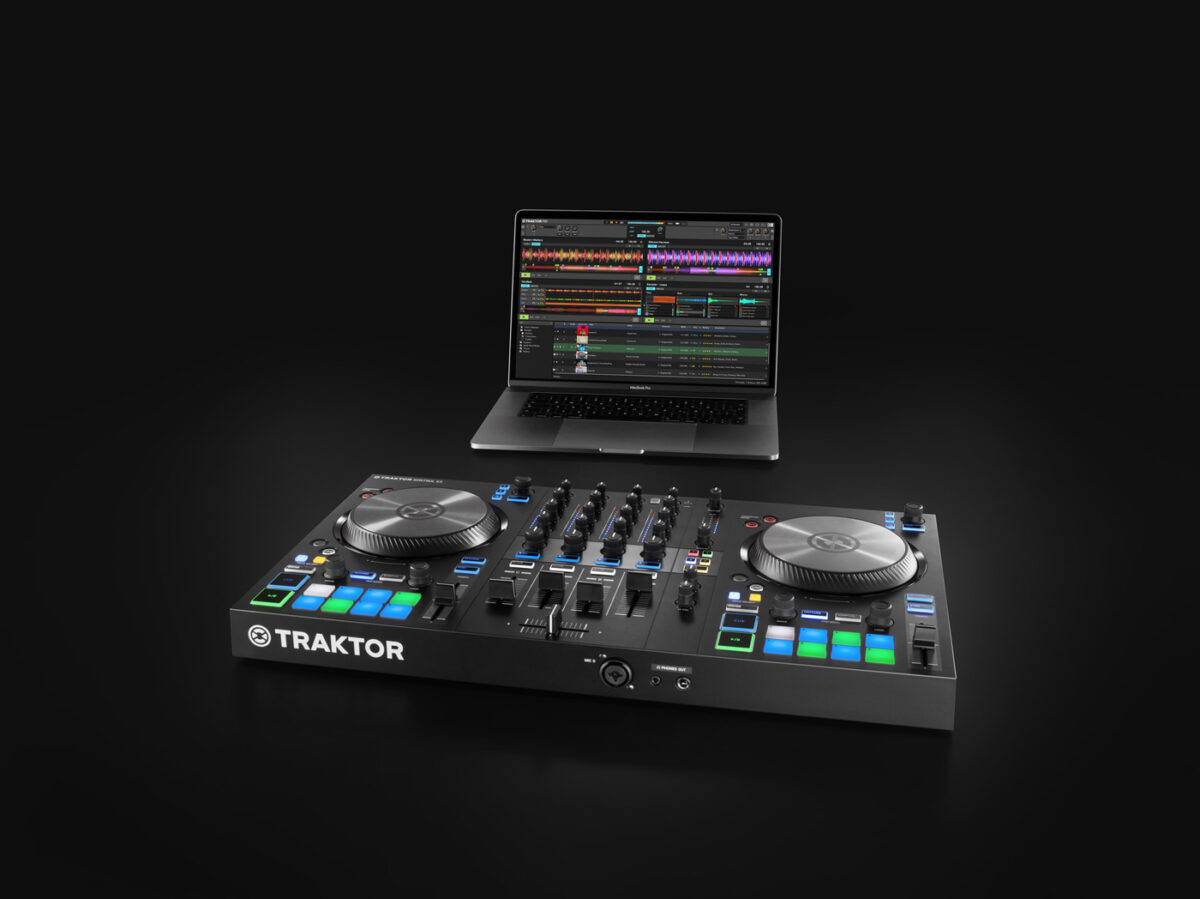
The Traktor Kontrol S2 is a good controller for beginner DJs that want to mix two tracks. DJs who want to mix up to up to four tracks can check out the Traktor Kontrol S4 or Traktor Kontrol S3.
Other Traktor Kontrol hardware allows you to control the decks and effects in Traktor, and send the audio to other devices. The Traktor X1 MK3 is a versatile DJ controller that includes endless possibilities for effects, loops, and mixing and can be a good tool for aspiring DJ.
Learning to use a DJ controller will allow you to progress to using a DJ mixer. Though DJ mixers look complicated, they all share a few common elements, like channel faders for controlling the volume of each track, an EQ section and gain control.
Using a DJ controller can prepare you to use Pioneer DJ CDJ or DDJ players. These are the most common type of decks you’ll encounter in nightclubs and bars, and they can be used with Traktor in HID mode. If you’d like to learn to use vinyl, you may want to learn to use a turntable, which can be used with Traktor with digital vinyl.
Other DJ equipment that you’ll need to invest in includes headphones, speakers or monitors for home practice, DJ software like Traktor and a laptop. Check out our detailed guide for more details about DJ equipment for beginner DJs.
3. Build and organize your music library
The next project you’ll need to work on is building a digital music library. This will require some time and some digging! If you want to learn how to DJ, the first thing you’ll need to decide is what type of music to play. If you want to specialize in a particular genre, start to find a lot of tracks in one style. If you want to be an open format DJ, buy music from all genres.
There are many good digital stores online for purchasing music, including Beatport, Traxsource, Juno Download and Bandcamp. Other stores to check out include Boomkat, Qobuz, and the new Electrofans Music Store. More mainstream download sites include iTunes, Amazon, 7digital and HDtracks.
DJ Pools are a good way to build up a music collection quickly as they give you access to a large volume of tracks. BPM Supreme, DJcity, zipDJ and Promo Only are a few of the most popular DJ pools. A download pool is more cost-effective than buying individual tracks, and especially good if you’re into more mainstream or urban sounds. Streaming services like Beatsource offer a futuristic way for DJs to access the Beatport music catalog and have it available in Traktor. Although most DJs today still own music, streaming tracks in sets may gain popularity in years to come.
Once you have music, you’ll need to find a location to store it, either on your computer hard drive or an external USB.
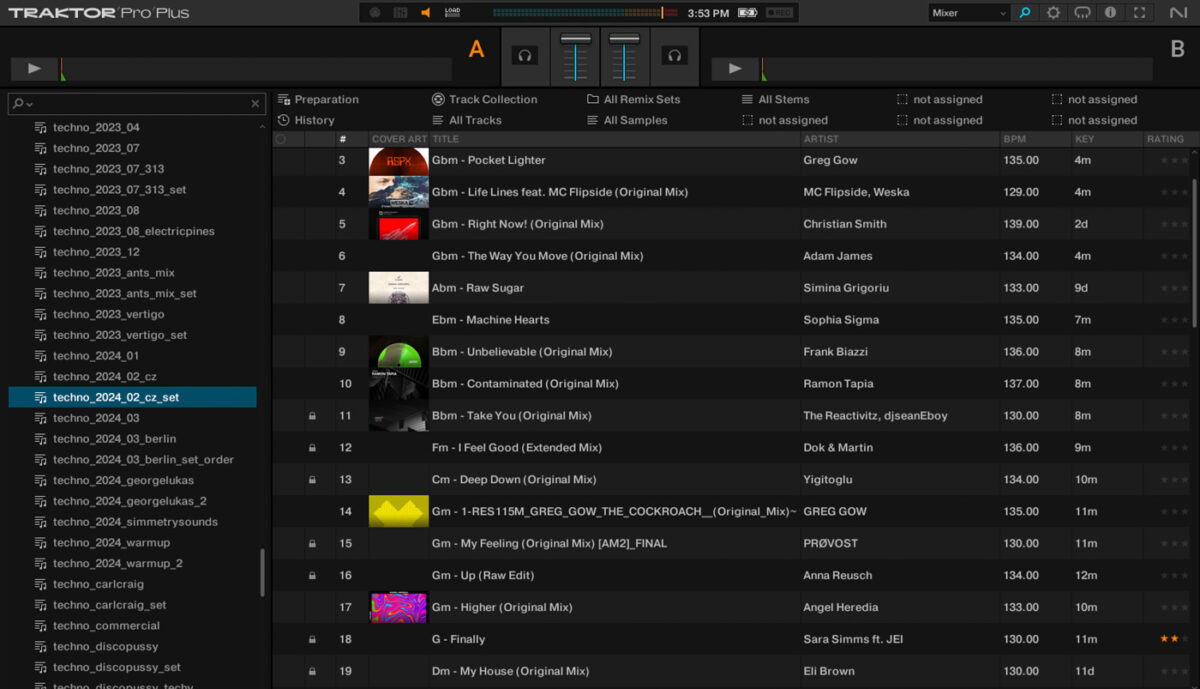
You can use Traktor Pro 3 to organize your music collection into playlists. Create and name playlists in a way that makes sense to you. A few suggestions are naming the playlists by genre, the month the tracks are purchased in, or the event you’ll play them at. When you’re playing live or recording, you don’t want to waste time finding songs, so it pays to sort out your tracks in advance.
For more info about how to build a music collection and how to organize a music collection, check out our linked guides. And read more about how to manage your Traktor track library.
4. Learn to beatmatch
It’s crucial to learn to count the beats in music before beginning to DJ. Counting will help you beatmatch and understand the places in a song that are good transition points.
Dance and urban music is written in 4/4 time, meaning there are four beats in a bar.
- To learn to count in 4/4 time, turn on your favorite track, and as the first kick drum plays, count the beats up to four, using the kick drum.
- Four kick drums are one bar in 4/4 time, and the first kick drum is usually the first beat in a bar.
- Count eight bars in a row, and you’ll start to understand what’s known as the ‘phrasing’ in a track.
To create a smooth flow of music, DJs beatmatch tracks together. Beatmatching is one of the foundational skills of DJing, and is the technique of making the tempo of one track match the tempo of another. Beatmatching is much easier with today’s technology and Traktor. The tempo of music is measured in BPM, or beats per minute. To start beat matching, choose two tracks that are in a similar BPM range, within five BPM of one another.
It may be easiest to start mixing house music, or any music that is mainly percussive and has a four/four groove. Play one track, and using the first beat of the second track as a starting point, let the second track play. Quickly decide if the second track is faster or slower than the first track, and make adjustments using the pitch fader on your controller or player. Repeat this over and over until you can make the two tracks play at the same speed.

You can use Sync in Traktor to sync the tempo of the two tracks together. Using Sync means that the tracks will be automatically synced by Traktor, using the Beat Grids set on each track. For a sweeter sounding mix, use the key of each track to mix harmonically. Learn more about harmonic mixing here.
To learn more about how to beatmatch and use Sync in Traktor, check out this guide.
5. DJ transition techniques
Phrasing refers to the technique of aligning the musical structure of two tracks so that their beats and phrases (typically 4, 8, or 16 bars) coincide, ensuring a smooth transition between songs. This helps maintain the flow and energy of the music, creating a seamless listening experience for the audience.

Phrasing refers to the technique of aligning the musical structure of two tracks so that their beats and phrases (typically 4, 8, or 16 bars) coincide, ensuring a smooth transition between songs. This helps maintain the flow and energy of the music, creating a seamless listening experience for the audience.
It’s important for new DJs to learn to use the phrasing of the tracks in their collection to smoothly mix tracks together.
For example, every eight or sixteen bars of four could be good spots for a transition to the next track. A DJ transition is the technique used to change from one song to the next in a set.
Basic DJ techniques include fading tracks in, cutting to the next track in the mix, and utilizing the EQ and/or effects to sculpt the transition. The simplest type of transition is called the fade, where one song fades in as the other fades out.
Here’s a beginner’s quick-guide to fades:
- Start by loading in a track in Traktor in Deck A, and analyzing the track’s structure to find a part in the track that you can use to transition into the next song.
- Play the next track in Deck B, beginning on beat one of a bar so that the second track comes in as the first track in Deck A fades down.
You can use Traktor cue points to put markers on your tracks at key places in each song, and use these cue points to remind you to transition. To learn more about how to transition, and phrase mixing, you may want to take a few DJ lessons with a local or online teacher.Learn more about five types of track transitions in our guide.
6. Music programming: How to select the right tunes
Music programming is an art that you’ll need to master. It involves playing the right songs, at the right time.
Though track selection is quite subjective, there are some simple guidelines that you’ll want to follow.
Think about the type of format you’re creating music for and choose your songs accordingly. If you’re creating a studio mix, you can select songs for the beginning, middle and ending of the mix and take your listeners on a journey. Think about playing music like storytelling; the songs you select should make musical sense when played together in a particular order.
If you play live, think about the city you’re playing in, the location (a club, bar, festival, restaurant or other setting), and look at your audience as you perform. Try to select songs that the audience enjoys and look for signs that they like the music.
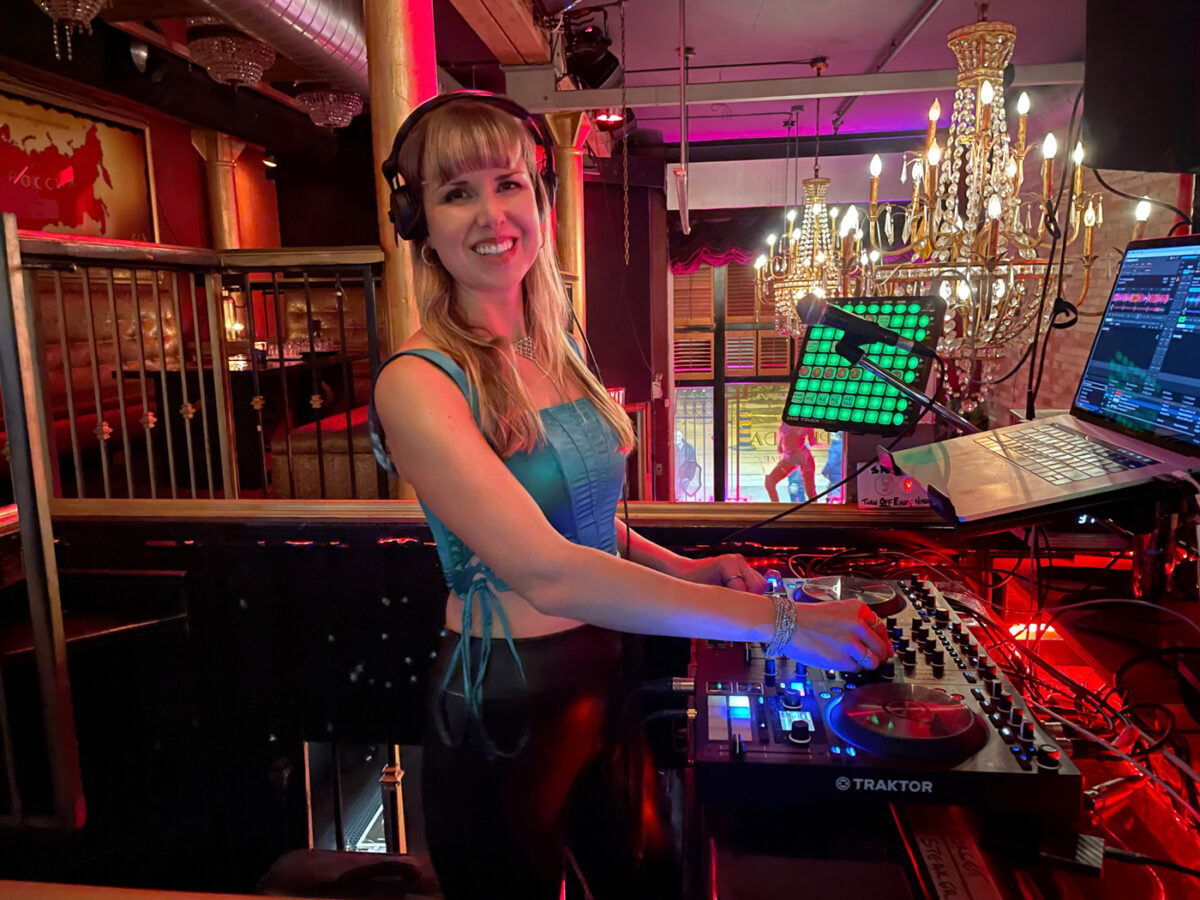
As you gain experience playing, the art of programming music becomes more intuitive as you become more comfortable performing. Other music programming points to consider include whether you’re the opening DJ, headlining DJ or closing DJ for the night. Try to set a mood and tone with your tracks, and watch as your selections create the vibe in the room. DJing can be a magical experience once you master the art of music programming!
Improve your DJing with these tips
You’ve picked up a few tips, and now it’s time to practice and improve your DJ skills! Start your DJ journey by picking up a copy of Traktor Pro 3, a DJ controller and the rest of the DJ equipment you’ll need to start out.
Build your music library one track at a time and organize it using playlists in Traktor. Refer back to our blog articles to learn about DJ equipment, how to beatmatch and mix, use Traktor, create cue points, transition and more. Once you’ve mastered a few basic DJ skills, you can create recorded mixes and listen back to your work to analyze them.
Most importantly, have fun DJing, using your gear and playing music. DJing is a rewarding hobby that can provide years of enjoyment to everyone who’s willing to put in a little legwork!








